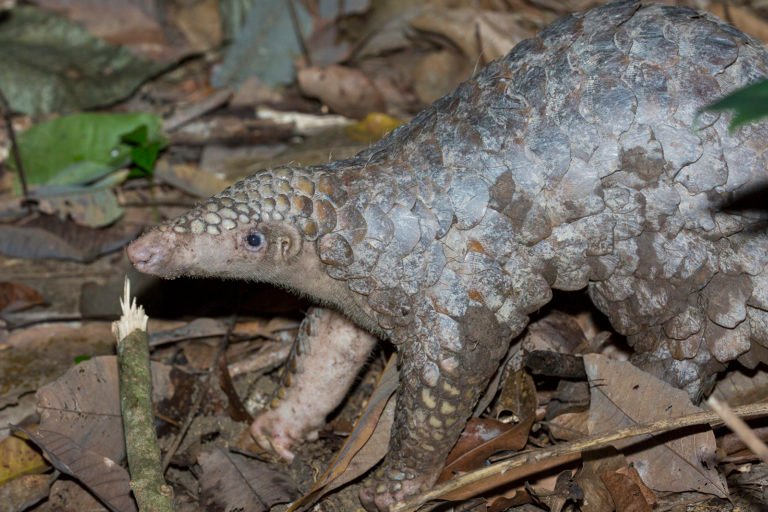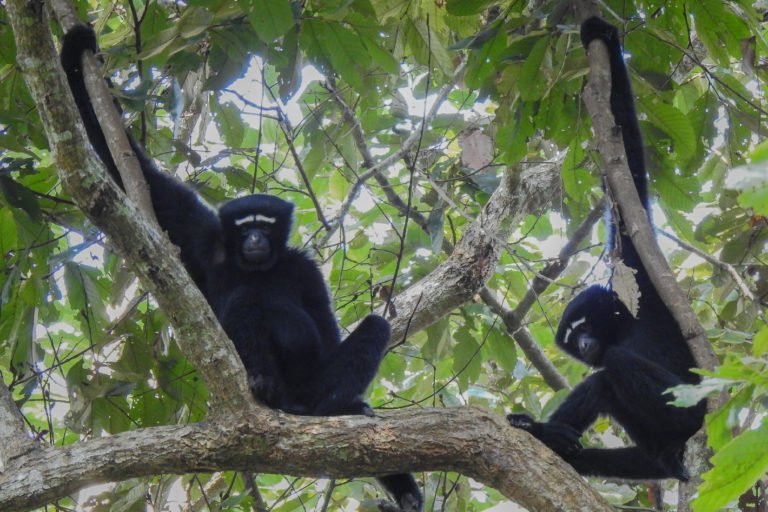- Myanmar supports some of the last refuges of rare and threatened species, such as tigers, leopards and pangolins, but lax law enforcement and porous borders make it a hotbed of illegal wildlife trade, imperiling the country’s remaining biodiversity.
- While a lot is known about flagrant trade in notorious markets in towns bordering China and Thailand, much of the trade with Myanmar remains opaque, new research shows.
- One-quarter of prior studies on the country’s wildlife trade have focused on just two border trade hubs, while little is known about patterns of domestic wildlife trade and consumption.
- The researchers call on authorities to establish a central wildlife crime database to promote data sharing of enforcement and research knowledge; further research on poaching motives; and improved enforcement of existing wildlife laws.
Lying at the nexus of South Asia, Southeast Asia and China, Myanmar hosts an extraordinary mix of ecosystems that represent some of the last refuges of an ever-lengthening list of imperiled species: tigers, leopards and pangolins to name a few. But the combination of teeming biodiversity and notoriously lax law enforcement also makes the country a hotbed of illegal wildlife trade, posing a threat to the survival of many species.
A recent review, published in Global Ecology and Conservation, indicates that despite detailed studies of international wildlife trade hubs along Myanmar’s eastern border, much of the country’s wildlife trade remains opaque. Specifically, little is known about patterns of domestic wildlife trade and consumption, such as how subsistence poaching and small-scale wild meat markets interact with larger cross-border markets targeting global buyers.
“Myanmar is known to be a conduit and a source of wildlife products internationally,” John McEvoy, lead author of the review and a conservation ecologist at the Smithsonian Conservation Biology Institute (SCBI), told Mongabay. “But really, it’s a little bit of a black hole.”
Besides direct consumption as wild meat, wildlife is traded for use in traditional medicine, jewelry and trinkets, with live animals sold into the pet trade and commercial breeding.
McEvoy and his colleagues from SCBI and several Myanmar-based conservation NGOs built a picture of the wildlife trade by synthesizing decades’ worth of data from 59 separate studies, ranging from peer-reviewed research to NGO reports and press releases.
One-quarter of the studies focused on just two major markets in the border towns of Mong La and Tachilek — key channels for illegal wildlife items entering China and Thailand, respectively. McEvoy said that research emphasis on these cross-border markets is well-founded given the alarming array of plants and animals and their body parts, for sale in both towns.
“It’s a long and sad list,” he said. “It ranges from those kind of high-profile, high-value things like tigers, elephants [both ivory and skin], clouded leopards, pangolins, all the way down to … things like gibbons, bears of various kinds, otters [and] slow loris.”
The authors argue that Myanmar functions as a key transit country for illegal wildlife products through Asia due to a lack of law enforcement. Although Myanmar is a party to CITES, the global treaty to protect wildlife from harmful international trade, seizures of contraband wildlife imports and exports are infrequent and rarely reported. Moreover, the country’s 2021‒2025 action plan to counter illegal wildlife trade is yet to be implemented.
The fallout is live animals and goods flowing relatively freely into and out of the country, often in plain sight. One study, for instance, documented traders selling tiger and leopard products they openly claimed were brought in from India, Thailand, Malaysia and Indonesia. While another recent study of markets in Mong La and Tachilek recorded 16,500 ivory items, eight helmeted hornbill casques, more than 100 African rhino horn items, and at least 250 pangolins for sale between 2015 and 2020.

Notwithstanding the wealth of studies in cross-border hubs, McEvoy cautioned that activities across the rest of the country remain a mystery. Border markets “are very big and very important,” he said, “but there’s this other broad-scale view that needs to be taken of how the domestic consumption and trade of wildlife links to the bigger flow of wildlife through the country.”
Small-scale markets and suppliers selling wildlife goods for direct consumption and medicinal use proliferate throughout Myanmar, but the connections between poachers, local markets, and the larger border hubs that engage in international wildlife trade remain unclear. Of the 59 studies the researchers reviewed, only one had looked at potential trade routes between domestic and border markets.
To address these issues, the researchers call for the establishment of a national wildlife crime database, which would build a clearer picture of domestic trade patterns and streamline data-sharing among authorities and research groups. Such a resource would also help to elucidate trade networks across the wider Asia region, according to the review.
Paing Soe, a co-author of the review and a scientist with WWF-Myanmar at the time of the research, said information sharing is especially important at this time of political and civil unrest following the February 2021 military coup, which makes wildlife and conservation work on the ground challenging. “The different enforcement departments need to make data accessible to each other and work with each other better,” he said.

McEvoy explained that a shared database of wildlife crime would bring together different types of knowledge, such as seizure records detailing the location and quantities of contraband and research data from market surveys. “Being able to put [data] into a spatial context would be particularly useful so that you can visually map the trade to identify hotspots so you can target interventions, be they educational, community-based or enforcement interventions,” he told Mongabay.
He also recommended gathering insight into why people poach wildlife and engage in the illegal trade in the first place. Whether driven by poverty, a lack of education on sustainable use, or a lack of affordable and available protein, McEvoy said a variety of intervention responses will be necessary. He advocates a nuanced approach, focused on community engagement and education, rather than purely enforcement control, which could risk driving vulnerable groups further into poverty.
But even with improved data-sharing and interventions, the researchers say progress will be limited without stronger political will to uphold wildlife laws. The current challenges of monitoring trade on the ground in Myanmar and the ongoing shift to online trade add a further sense of urgency to the researchers’ calls.
“The road to effective control of wildlife poaching and trafficking in Myanmar will be a long and perilous one,” the review says, “and [so] it is even more important to maintain scrutiny of the illegal wildlife trade.”
Banner image: A Bengal slow loris (Nycticebus bengalensis) for sale in a border town market in eastern Myanmar. Image via Creative Commons (CC BY 2.0)
Citation:
McEvoy, J., Connette, G., Huang, Q., Soe, P., Pyone, K. H., Htun, Y. L., … Leimgruber, P. (2022). Joining the dots in an era of uncertainty – Reviewing Myanmar’s illegal wildlife trade and looking to the future. Global Ecology and Conservation, 37, e02179. doi:10.1016/j.gecco.2022.e02179
Vigne, L., & Nijman, V. (2022). Elephant ivory, rhino horn, pangolin and helmeted hornbill products for sale at the Myanmar–Thailand–China border. Environmental Conservation, 1-8. doi:10.1017/s0376892922000169
Carolyn Cowan is a staff writer for Mongabay. Follow her on Twitter @CarolynCowan11
FEEDBACK: Use this form to send a message to the author of this post. If you want to post a public comment, you can do that at the bottom of the page.














